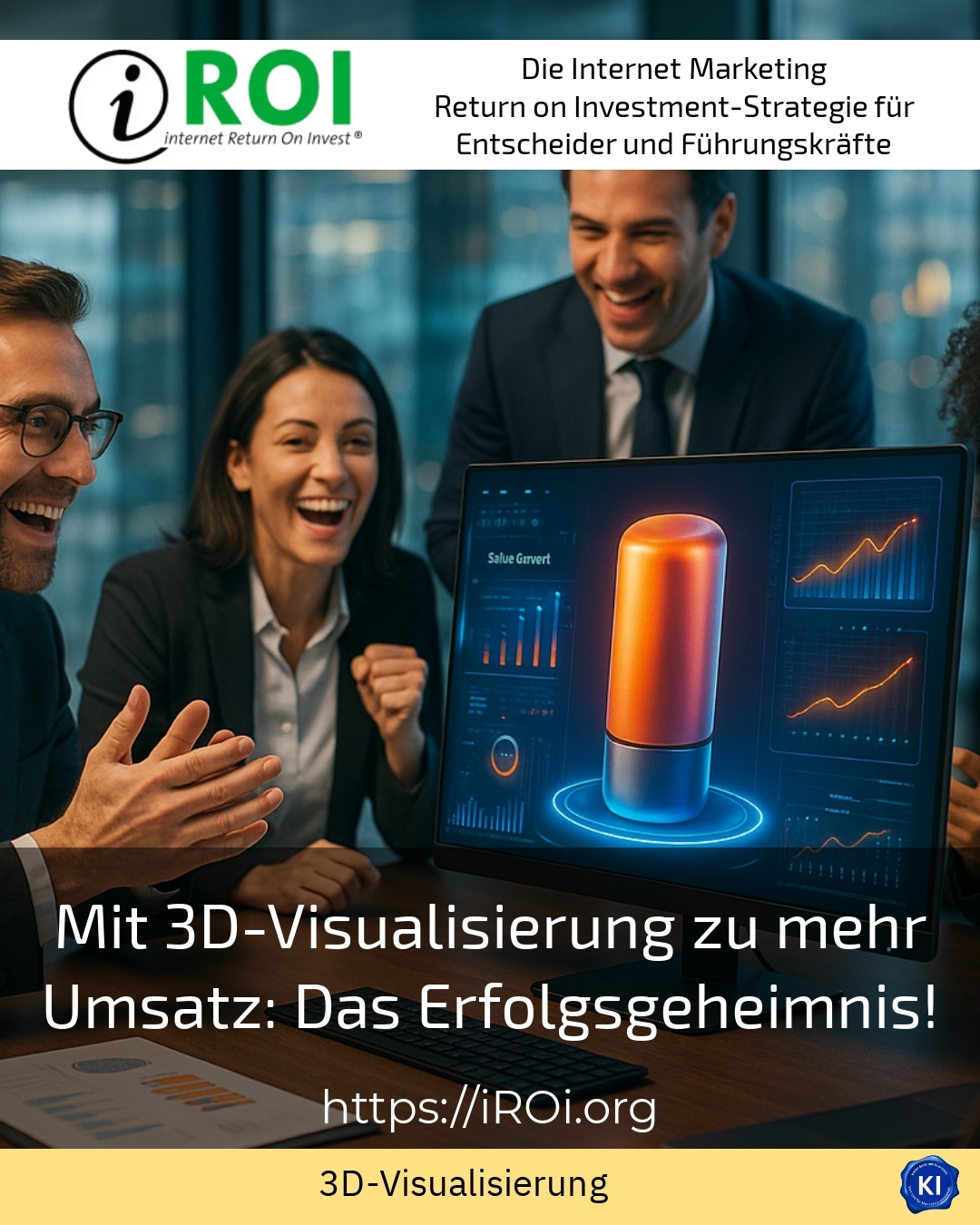The use of modern technologies is increasingly characterising the success of a wide range of industries. Especially the 3D visualisation opens up new perspectives for companies for product presentations and sales promotion. It helps to communicate complex products and projects in a lively and comprehensible way. In this way, companies not only create trust among customers, but also measurably increase their sales.
The power of 3D visualisation in sales
A detailed visualisation in three dimensions changes the way products are experienced. Customers get a realistic impression without seeing a physical sample. This increases the willingness to buy and reduces returns because expectations are met more precisely.
For example, a manufacturer of lean manufacturing systems used 3D simulations for its shooter trolleys to demonstrate realistic processes at trade fairs and customer meetings. This inspired potential buyers because they were able to experience the functionality in a playful way without seeing elaborate prototypes. This approach contributed significantly to higher sales[1].
In the furniture industry 3D visualisation the presentation of all variants of a product in a digital configurator. Customers can select colours, materials and shapes interactively and thus design the furniture of their dreams. This increases customer value and often leads to a deeper bond with the brand[2].
Realistic 3D visualisations are a valuable sales aid for retailers of technical devices. They show the product from all angles, reveal hidden details and make it easier to explain complex functions. This creates security and trust among buyers, which is reflected in a higher conversion rate[3].
Practical tips for profitable use
In order for 3D visualisations to provide real impetus in sales, a few points are important:
- High level of detail: The more accurately the model reflects reality, the more convincing the effect.
- Interactivity: Allow customers to change perspectives or test variants.
- Mobile usability: Presentations should also run smoothly on smartphones and tablets so that they can be used flexibly.
- Integrate augmented reality (AR): Place products virtually in your own environment, for example furniture in the living room.
BEST PRACTICE for a customer (name concealed due to NDA contract): A 3D model was developed for a technical start-up that immediately showed potential investors a prototype in their own office using an AR app. This led to faster financing commitments, as everyone was impressed by the realistic impression.
3D animations also bring significant added value to the hotel industry. Travellers can take a virtual tour of rooms, lobbies and spa areas before they book. This increases trust and the willingness to accept higher prices[4].
3D visualisation as the key to emotional customer loyalty
Emotional appeal is more important today than ever before. In marketing in particular, 3D images and animations help to convey specific moods and experiences. They can vividly tell the story and function of a product and thus attract attention.
One innovative lighting company, for example, used 3D renderings to show the lighting effect of its lights in different living environments. Customers were thus directly inspired and found it easier to make a purchase decision[5].
Visualising individually configurable vehicles with 3D technology is now standard practice for car manufacturers. Prospective customers can experience the different equipment options directly, which supports the consultation and promotes sales[6].
iROI coaching - support for demanding 3D projects
Many companies face the challenge of integrating 3D visualisation into their marketing and sales in an efficient and targeted manner. iROI-Coaching supports you in selecting suitable technologies and integrating them into existing processes. Our experienced consultants will help you overcome technical hurdles and develop creative solutions.
This support is particularly valuable when several teams or external partners work together. This makes it possible to perfectly align the use of 3D visualisation with the company's goals and achieve maximum success.
BEST PRACTICE for a customer (name withheld due to NDA contract): A medium-sized mechanical engineering company used the consultancy to train its sales staff in the use of interactive 3D product presentations. This led to increased self-motivation and a measurable increase in turnover.
My analysis
The diverse application possibilities of 3D visualisation show how much this tool can modernise sales. It not only supports the communication of technical details, but above all the emotional experience. In times of increasing digitalisation, this is becoming a decisive factor in winning and retaining customers in the long term. The investment in high-quality 3D visualisations pays off through higher sales and fewer returns.
Further links from the text above:
Case study of a virtual manufacturing project
3D product visualisation - examples, costs & advantages
3D product rendering & visualisation for more sales
3D animations of a hotel - influence on sales & customer loyalty
3D visualisation in marketing - DESIGN030
7 tips: Increase sales with configurators
Examples of 3D visualisation | VIRTUAL FACTORY
For more information and if you have any questions, please contact Contact us or read more blog posts on the topic internet Return on Investment - Marketing here.
















